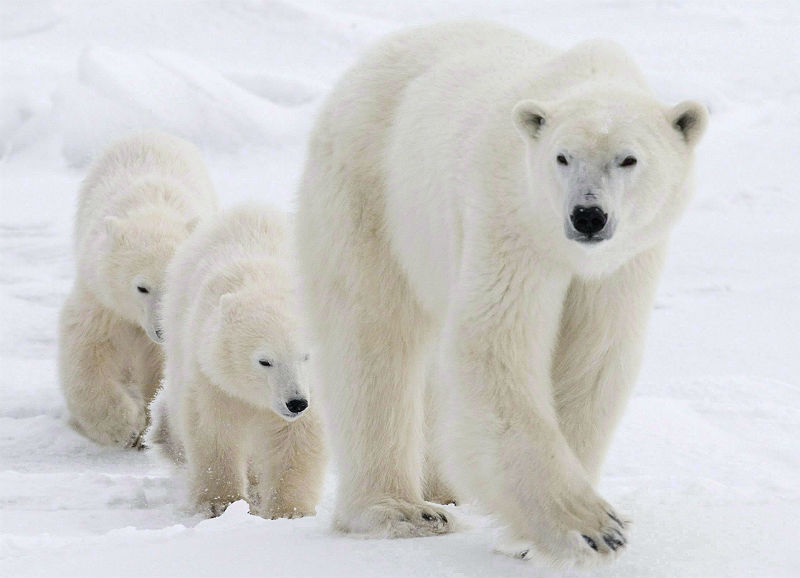
Too many polar bears are roaming the Canadian Arctic, and the growing population is posing an increasing threat to Inuit communities, according to a controversial new government report which has been bitterly contested by environmental scientists.
The draft report was prepared by the Nunavut government, and consists of submissions from Inuit community groups across Canada’s northernmost territory. Public consultations are set to start on Tuesday before the government unveils the final report later in the year.
“Inuit believe there are now so many bears that public safety has become a major concern,” said one section of the report, according to the Canadian Press. “Public safety concerns, combined with the effects of polar bears on other species, suggest that in many Nunavut communities, the polar bear may have exceeded the coexistence threshold.”
The renewed focus on polar bears comes after a tragic summer for the region: two people were killed by bears in separate attacks, including father Aaron Gibbons, who died protecting his children.
Researchers agree that polar bears represent a growing threat to Inuit communities, but say that is because climate change has pushed them closer to human settlements – not because the bear population is growing.
“There seems to be a divergence between scientists and Inuit on the threat that climate change poses to this species,” said Andrew Derocher, a polar bear researcher at the University of Alberta.
Scientists and conservation groups have warned that a warming climate has reduced sea ice and the availability of prey, pushing bears on to the mainland – and closer to humans.
But Inuit argue their own observations are often ignored, and the new report highlights a growing tension between scientific research and Inuit knowledge based on from thousands of years of living in the region.
“We know what we are doing, and western science and modelling has become too dominant,” wrote the Kitikmeot regional wildlife board as part of its submission to the report.
“Our knowledge, is not the same as thousands of years ago. If your life depended on it, you’d better know what the ice condition is,” said Gabriel Nirlungayuk, an Inuk hunter of Rankin Inlet. “Our knowledge has always evolved.”
Aerial surveys are often used by scientists to determine the population health of bears. But Nirlungayuk said that some of the best hunting conditions for polar bears are during stormy, foggy weather that grounds aircraft – when bears can sneak up closer to their prey.
The polar bear hunt remains a critical and lucrative component of life in the northern communities. Hunters can receive as much as $10,000 for pelts, with residents parcelling up and sharing the meat for food. Canada has long resisted legislation that would terminate the harvest.
While Inuit and scientists disagree on the population of the bears, they both foresee problems in the future.
Derocher worries bears will continue to show up in communities, drawn in by numerous attractants – putting both humans and bears in harm’s way.
“We’ve been saying this for years: we’re going to have a lot more problem bears. And if we don’t get on top of it, we’re going to see a lot more issues coming down the road,” he said.
Nirlungayuk agrees. “We want to enjoy being out on the land with our families. But today, people need to carry a rifle all the time just to enjoy the great outdoors.”













